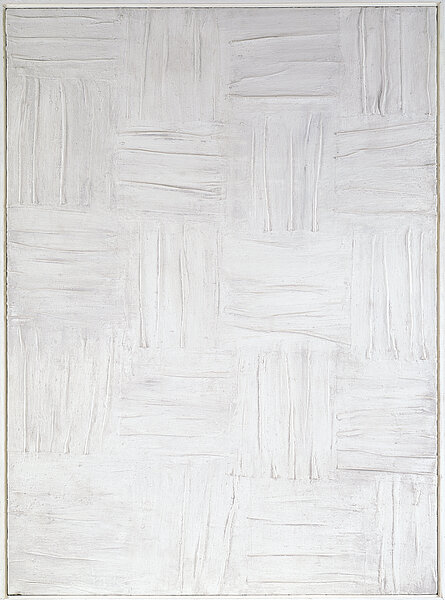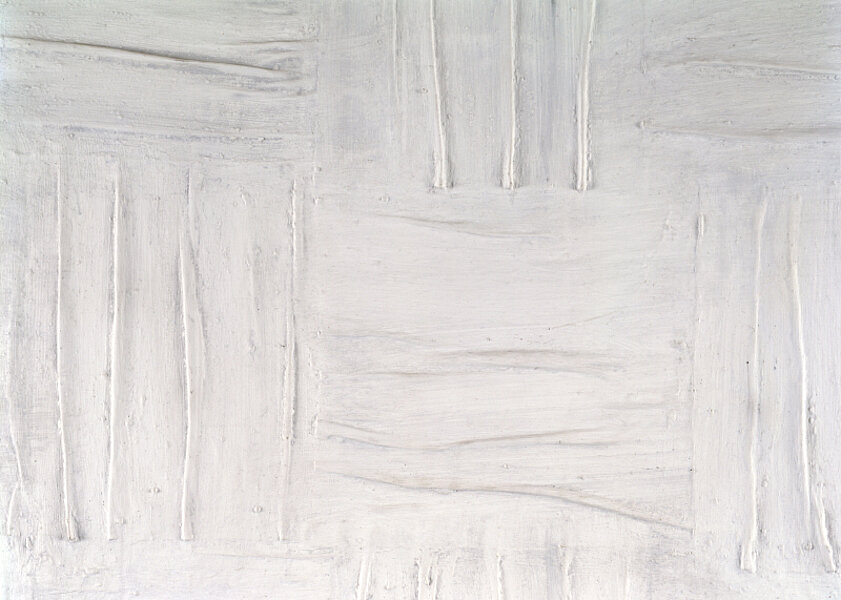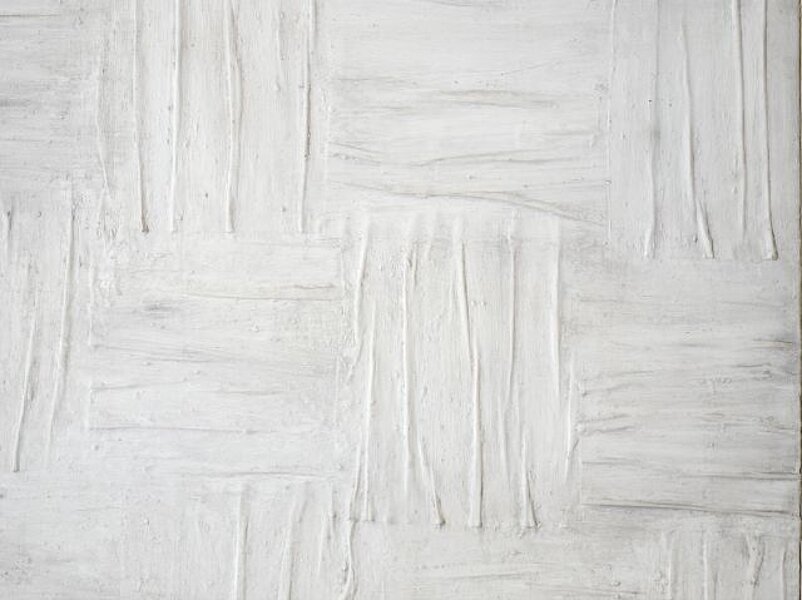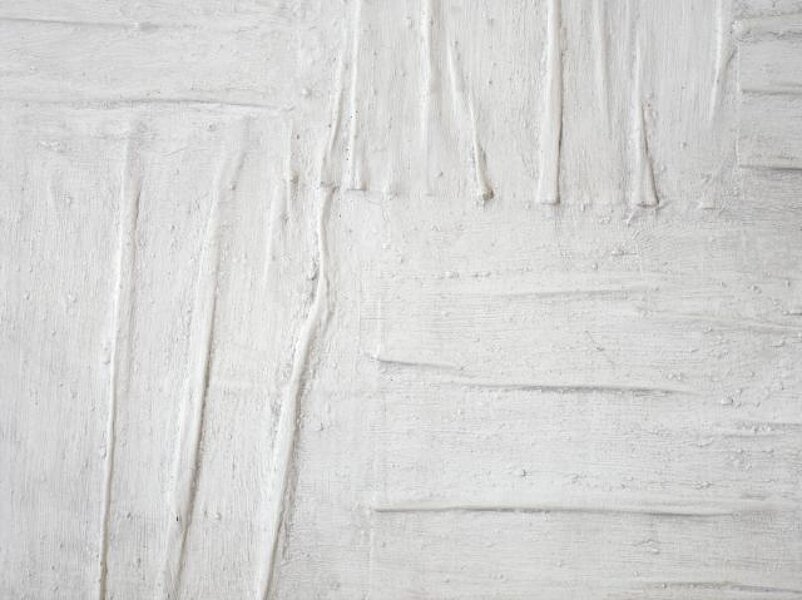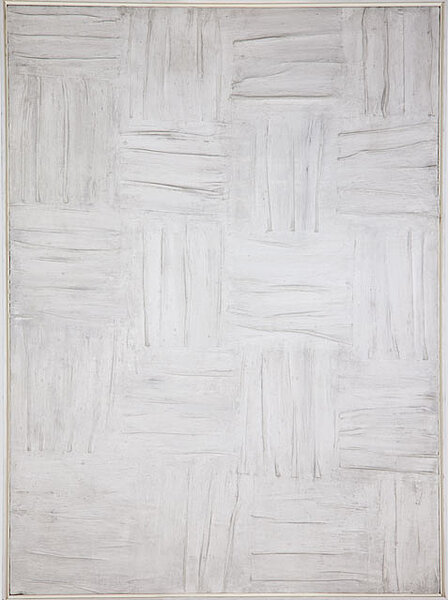
Manzoni, Piero
Achrome
1959
| Object description | Kaolin, white glue on canvas |
|---|---|
| Dimensions |
Rahmen:
height: 163,6 cm,
width: 123,4 cm,
depth: 8 cm
Objekt:
height: 150,5 cm,
width: 110,5 cm,
depth: 2 cm,
height: 154,1 cm,
width: 114 cm,
depth: 2,9 cm
|
| Year of acquisition | 1981 |
| Inventory number | ÖL-Stg 111/0 |
| Creditline | mumok - Museum moderner Kunst Stiftung Ludwig Wien, Leihgabe der Österreichischen Ludwig-Stiftung |
| Rights reference | Bildrecht, Wien |
| Further information about the person | Manzoni, Piero [GND] |
| Literature |
Museum der Wünsche Museum moderner Kunst Stiftung Ludwig Wien |
“There is nothing to say, one must only be, one must only live,” said Italian artist Piero Manzoni in a concise summary of his work as an artist. On "Achrome", a painting of 1958, fabrics of identical size are arranged systematically on the canvas like a coarse tissue. By then covering the canvas with kaolin, a white liquid which dries quickly, Manzoni left the final form of the painting to the drying process. What mattered here was not random form, but the withdrawal of the artist’s own painterly gesture in favor of an objectivity. Since Manzoni believed that there was nothing to say, then there could also be nothing to add to objects. The title is also programmatic. The newly coined word Achrome, which could be translated as “non-colored,” strongly clashes with both monochrome, painted in one color only, and polychrome, painted in many colors, and thus stands for the non-design of the surface in terms of color. The painting is as it is and it is not fraught with individual gestures and signs. Nonetheless it is more than just a non-colored field. The dimensions of the various square elements are finely balanced with the picture as a whole. The medium is the canvas, and Manzoni seems microscopically to repeat the material quality of canvas on the surface. One could say that the painting represents nothing, for it does not depict anything in a classical sense, but yet it is quite capable of showing something—namely an additional dimension of itself.
© mumok – museum moderner kunst stiftung ludwig wien
